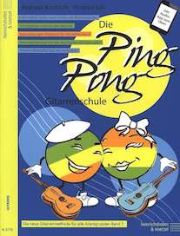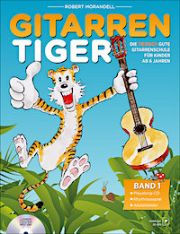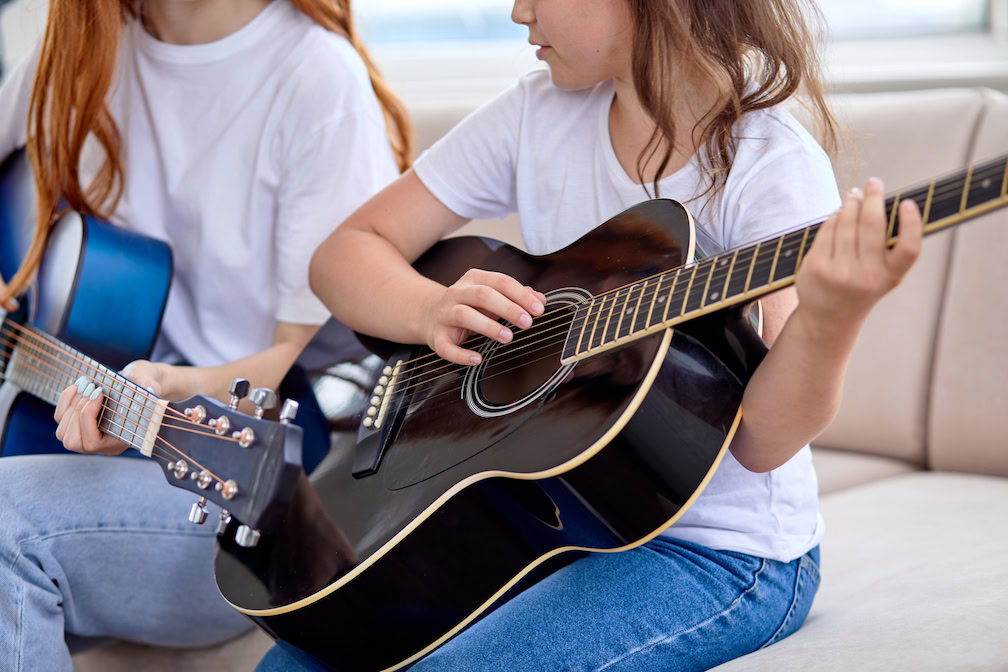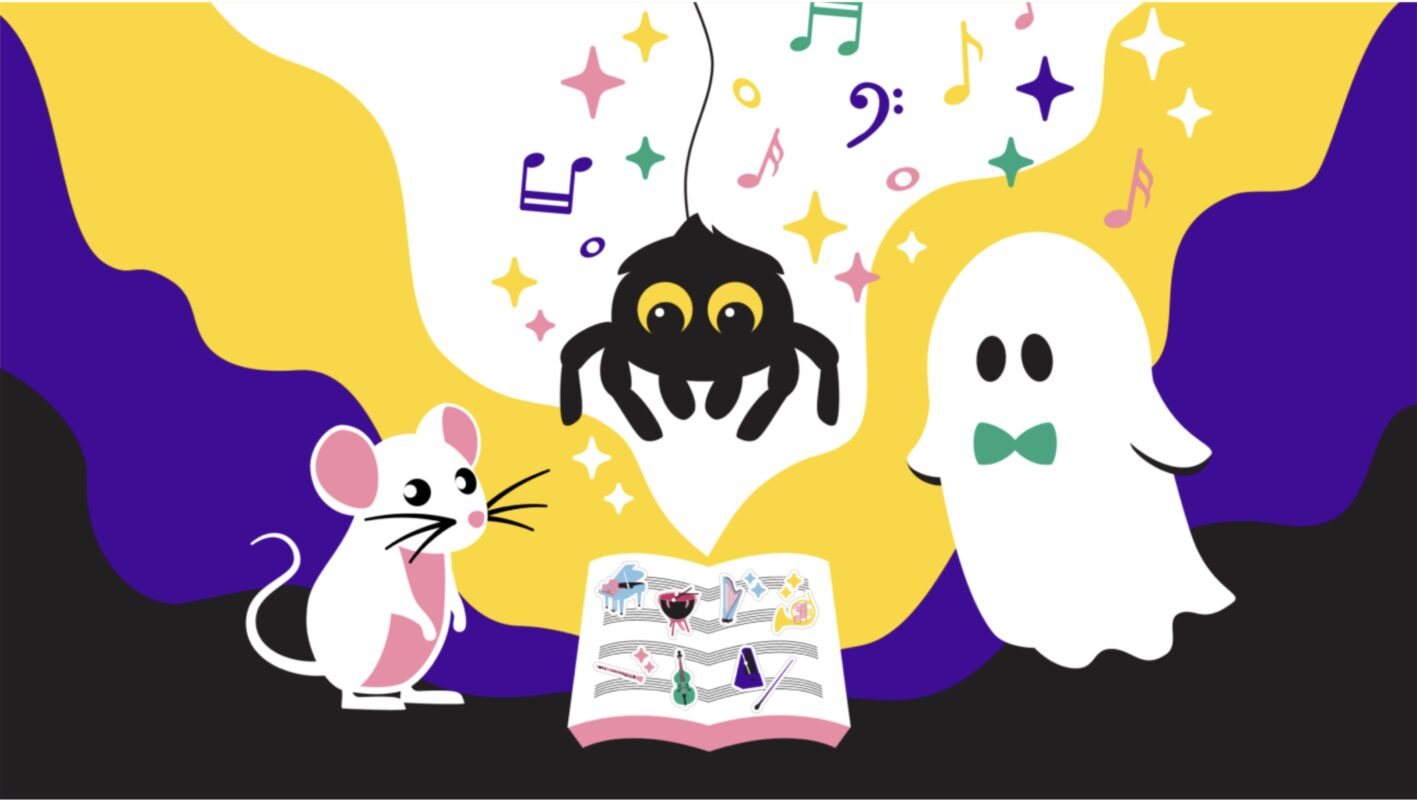Ping, Pong and the guitar tiger
The new guitar school published by Heinrichshofen & Noetzel focuses on reading music; the one by Doblinger on singing.

The most striking feature of the new Ping-Pong Guitar School by Andreas Knoblich and Philippe Loli are the many notes in whose heads the note names are drawn in an irregular distribution. When working on a piece, the teacher should only play the normal, unprepared notes, the pupil only the labeled ones and vice versa - as in ping-pong (the school is also illustrated with two little figures of this name). This enables the pupil to memorize the note names quickly and confidently, and the constantly forced attention - when will it be my turn? - will also quickly become rhythmically proficient.
Based on the chord names, for which it is quite common that the German H through the English B is replaced, the single tone h always as b but, unlike in the English-speaking world, in lower case - except for the note heads, which are in turn in capital letters. A number of editorial carelessnesses spoil what is in itself an interesting didactic concept. For example, the first 22 tracks on the play-along audio app are recorded too low. Preparatory explanations and patterns for the right hand only appear after the corresponding pieces, and the last five somewhat longer numbers are consistently arranged in such a way that you have to scroll through them.
Robert Morandell takes a different approach with his spiral-bound course Guitar tiger. The guitar is sung to right from the start. Notation is not introduced in the first lesson, but gradually; tablature is used for rhythm patterns and finger exercises for the left hand - called "challenges". In solo pieces, abbreviated chord progressions alternate with written-out melody bars. The figure of the tiger, which does not mutate into a cow or bear, but at least into "Mu(h)tiger", "Bärtiger" and "Schmusetiger", leads through the songs.
The author's experience in publishing pedagogical guitar literature is evident in some of the details: alternating tirando or apoyando? The tone d' grip with the 3rd or 4th finger? Morandell tacitly but deliberately leaves such decisions to the teacher. The only drawback is that the tempo of the exercises on the CD provided is too fast for most children.
Andreas Knoblich and Philippe Loli: The Ping-Pong Guitar School. The new guitar method for all ages, Volume 1, N 2770, with practice app, € 19.90, Heinrichshofen & Noetzel, Wilhelmshaven
Robert Morandell: Gitarrentiger. Die tierisch gute Gitarrenschule für Kinder ab 6 Jahren, Vol. 1, D. 35 963, with CD, € 29.90, Doblinger, Vienna










